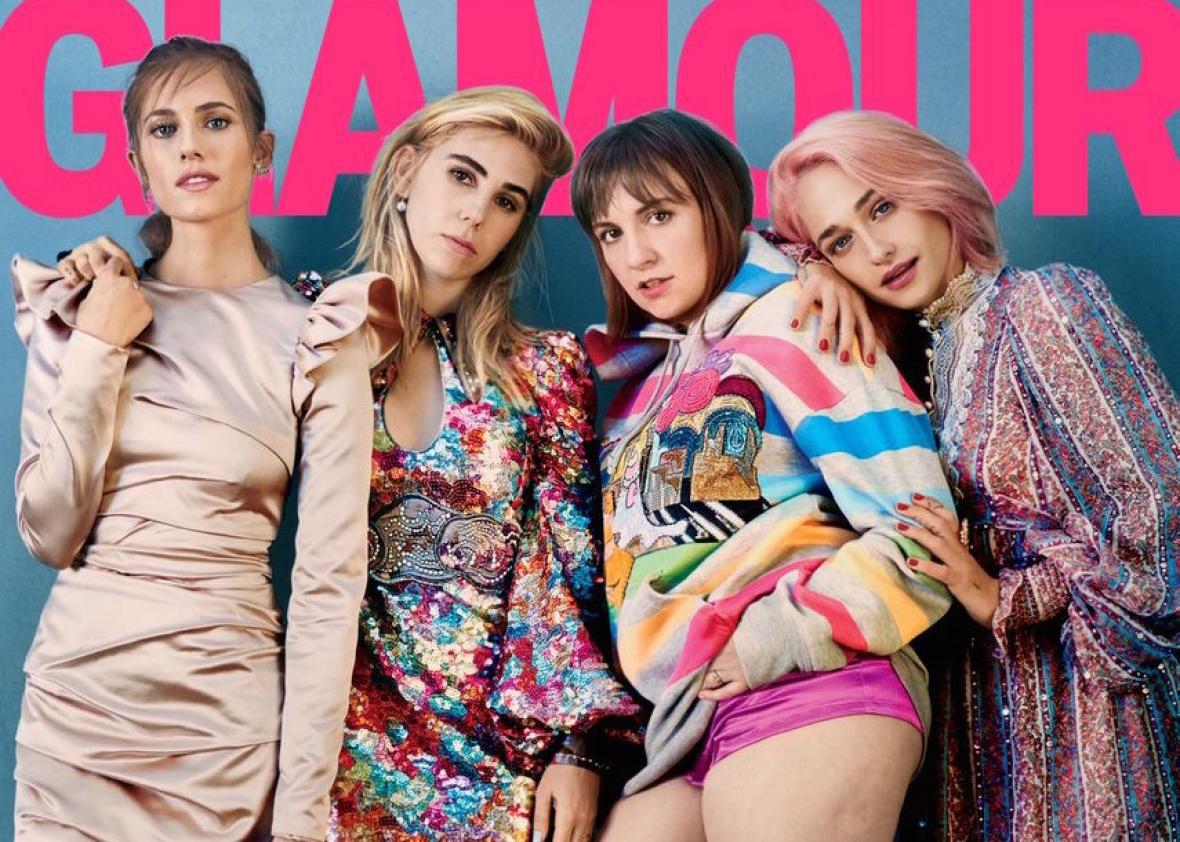Glamour is shouting from the rooftops that its February issue was produced entirely by women. The reporters who wrote the articles, the photographers who shot the spreads, the designers who laid out the pages, the stylists who dressed the celebrities, the makeup artists who applied products to those celebrities’ faces—all women.
Readers might be surprised to learn that, though Glamour is a magazine explicitly built for a female readership, this level of female domination isn’t the publication’s norm. In fact, in some segments of Glamour’s production, men apparently outnumber women two to one.
Editor Cindi Leive discovered in fall 2016 that 63 percent of the photographers Glamour paid for print work were male. So were 68 percent of the hairstylists. Just under half the print magazine’s makeup artists were female, but they were far more likely to work on the smaller stories than male makeup artists, who got the big-time spreads. If these are the stats at a women’s magazine, imagine the behind-the-scenes breakdown of publications geared toward men or a gender-neutral audience.
“While we employed female writers almost exclusively, the visual content of the magazine—the stuff you look at—was more likely to be made by men,” Leive writes in her February issue editor’s note. “Gender equality is on all our minds, and gender equality doesn’t just happen at the CEO or president-of-America level. It starts at home, and as I looked at those numbers, it was pretty clear: Our home could use a shake-up. “

Glamour
The only exception to February’s all-woman issue is Carl Ray, makeup artist to Michelle Obama. (Ray gives an interview in the issue.) In her note, Leive promises that Glamour will continue to “meaningfully” amp up the proportion of women it hires in “creative-contributor roles” in 2017 and report to readers on its progress. Any increase in female representation in creative roles will likely place Glamour ahead of its peers—Leive writes that the publication is currently “pretty average” in the industry when it comes to the gender breakdown of the people who make magazine visuals.
Luckily, Leive has decided that average isn’t good enough for a magazine that purports to champion gender parity and female excellence in every industry. “We’re a brand that cries foul when there are not enough women represented” in the upper echelons of business, Leive told WWD. “Glamour is the first to talk about why that should change.” Inside the issue, Glamour provides welcome context for the industry standard of men making images and women posing for them. In fashion as in other artistic genres, men who are rising stars in the industry are seen as inventive auteurs, while women are often brushed off as inexperienced navel-gazers.
Putting women in front of the camera while men wield creative control both reflects and creates a social paradigm that lets men be “doers” while relegating women to the “done to.” Women’s magazines that lean on men to style, photograph, and make up the women in their pages are quite literally printing and disseminating a vision of women seen through the male gaze. Glamour is right to make this overdue alignment in priorities. If other women’s magazines want to be taken seriously by readers who care about gender equity, they’ll follow suit.
